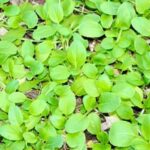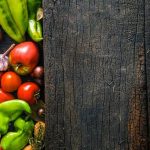Are you eager to start your very own vegetable garden in the unique climate of Northern Florida? Vegetable gardening in Northern Florida offers a wealth of opportunities and challenges due to its specific climate and soil conditions. Whether you are a seasoned gardener or a beginner, this comprehensive guide will provide you with all the essential information you need to successfully grow your favorite vegetables in this region.
Northern Florida is characterized by its humid subtropical climate, which sets it apart from the rest of the state. With mild winters and long, hot summers, the growing season for vegetables can be quite different compared to other parts of Florida. It is important to understand the specific climate and soil conditions when planning your vegetable garden in this region.
In this article, we will explore the climate and soil conditions of Northern Florida that are crucial for successful vegetable gardening. We will also provide valuable insights into suitable vegetables for this climate, tips for starting a vegetable garden, seasonal planting guides, managing common pests and diseases, as well as the necessary tools and equipment.
Additionally, we will showcase success stories of vegetable gardening in Northern Florida to inspire and motivate you on your own gardening journey. Whether you are looking to grow tomatoes, peppers, or lettuce, this guide will equip you with everything you need to know to flourish as a vegetable gardener in Northern Florida.
Climate and Soil Conditions in Northern Florida for Vegetable Gardening
When considering vegetable gardening in northern Florida, it’s important to understand the climate and soil conditions that will impact your garden. Northern Florida has a humid subtropical climate with mild winters and hot, humid summers. The average annual temperature ranges from 60°F to 70°F, with the summer months experiencing temperatures in the high 80s and low 90s. The region also receives an average of 50 inches of rainfall per year, providing ample moisture for vegetable crops.
In terms of soil conditions, northern Florida is known for its sandy soils with low fertility levels. These soils drain quickly and can be low in organic matter, making it essential for gardeners to add amendments such as compost or peat moss to improve soil structure and fertility.
Suitable Vegetables for Northern Florida’s Climate
When it comes to vegetable gardening in northern Florida, there are several vegetables that thrive in the region’s climate and soil conditions. Some suitable vegetables for northern Florida include:
- Tomatoes
- Peppers
- Squash
- Okra
- Cucumbers
- Green beans
- Collard greens
These vegetables are well-adapted to the warm temperatures and high humidity of northern Florida, making them ideal choices for gardeners in the region. By selecting the right vegetables for the climate and soil conditions, gardeners can increase their chances of success when starting a vegetable garden in northern Florida.
Suitable Vegetables for Northern Florida’s Climate
When it comes to vegetable gardening in northern Florida, it’s important to choose the right vegetables that can thrive in the climate and soil conditions of the region. Thankfully, there are several vegetables that are well-suited for northern Florida’s climate and can provide a bountiful harvest for gardeners.
One of the most popular vegetables for northern Florida is okra. This heat-loving vegetable thrives in the warm temperatures of the region and can be planted from late spring to early summer. Another suitable vegetable for northern Florida is sweet potatoes, which are not only easy to grow but also have high nutritional value. Additionally, tomatoes are a great choice for northern Florida as they love the warm weather and abundant sunlight.
Furthermore, leafy greens like kale and collard greens are excellent choices for vegetable gardening in northern Florida. These hardy greens can withstand both the heat of summer and the occasional frost of winter, making them ideal for year-round planting in the region. Finally, peppers, both sweet and hot varieties, do well in northern Florida’s climate and can be a productive addition to any vegetable garden.
| Vegatable | Best Planting Time |
|---|---|
| Okra | Late spring to early summer |
| Sweet Potatoes | Spring |
| Tomatoes | Early spring |
| Kale & Collard Greens | Fall or early spring |
Tips for Starting a Vegetable Garden in Northern Florida
Starting a vegetable garden in northern Florida can be a rewarding and enjoyable endeavor. Before getting started, it’s important to consider the climate and soil conditions of the region. Northern Florida has a warm and humid subtropical climate, with mild winters and hot summers. The soil in this area is typically acidic, sandy, and low in organic matter. When starting a vegetable garden, it’s essential to choose suitable vegetables for these specific conditions.
When starting a vegetable garden in northern Florida, one of the first steps is to prepare the soil. Adding organic matter such as compost or well-rotted manure can improve the soil structure and fertility. Raised beds can also be beneficial for improving drainage and creating a suitable growing environment for vegetables.
In addition to preparing the soil, selecting the right vegetables is crucial for successful vegetable gardening in northern Florida. Some suitable vegetables for this climate include tomatoes, peppers, cucumbers, squash, okra, sweet potatoes, and various herbs. These vegetables are well-adapted to the warm temperatures and can thrive in the sandy soil often found in this region.
| Vegetable | Best Planting Season |
|---|---|
| Tomatoes | Spring & Fall |
| Peppers | Spring & Fall |
| Cucumbers | Spring & Summer |
| Squash | Spring & Summer |
Seasonal Planting Guide for Northern Florida
Spring Planting
In northern Florida, the spring season is a great time to start planting various vegetables in your garden. The warmer weather and ample sunlight create perfect conditions for vegetables like tomatoes, peppers, squash, cucumbers, and carrots. It’s essential to start these vegetables early in the season to ensure a bountiful harvest before the intense heat of summer sets in.
Summer Planting
While northern Florida’s hot and humid summers can be challenging for vegetable gardening, there are still some options for planting during this season. Heat-tolerant crops such as okra, sweet potatoes, black-eyed peas, and southern peas thrive in the summer months. It’s important to provide adequate irrigation and protection from the scorching sun to ensure the success of your summer vegetable garden.
Fall Planting
The fall season brings relief from the intense heat of summer and provides another opportunity for vegetable gardening in northern Florida. Cool-season crops like lettuce, kale, broccoli, Brussels sprouts, and spinach flourish during this time. Additionally, root vegetables such as radishes, turnips, and beets can also be planted in the fall for a late-season harvest. Be mindful of potential frost dates and plan accordingly to maximize your fall vegetable garden yield.
By following this seasonal planting guide tailored to northern Florida’s climate, vegetable gardeners can make the most of their growing seasons and enjoy a variety of fresh produce year-round. Understanding the optimal timing for planting different vegetables is crucial for successful vegetable gardening in northern Florida.
Common Pests and Diseases in Northern Florida and How to Manage Them
When it comes to vegetable gardening in northern Florida, it is crucial to be aware of the common pests and diseases that may affect your plants. By understanding these potential threats, you can take proactive measures to manage them and ensure the success of your garden.
Common Pests
One of the most common pests in northern Florida vegetable gardens is the tomato hornworm. These large green caterpillars can quickly decimate a tomato plant if left unchecked. Other common pests include aphids, whiteflies, and various types of beetles. These pests can damage plants by feeding on their leaves, stems, and fruits, leading to stunted growth and reduced yields.
Diseases
In addition to pests, vegetable plants in northern Florida are susceptible to various diseases such as early blight, powdery mildew, and bacterial wilt. These diseases can cause wilting, yellowing leaves, and rotting fruits, ultimately reducing the overall health and productivity of the plants.
Management Strategies
To manage these pests and diseases, it is important to practice good garden hygiene by regularly removing any affected or diseased plant parts. Additionally, using organic insecticidal soaps or neem oil can help control pest populations without harming beneficial insects. For disease management, applying fungicides according to label instructions can help prevent the spread of fungal infections.
By staying vigilant and implementing these management strategies, you can minimize the impact of pests and diseases on your vegetable garden in northern Florida. Regular monitoring of your plants and prompt action when issues arise will contribute to a successful growing season despite these challenges.
Tools and Equipment Needed for Vegetable Gardening in Northern Florida
When it comes to vegetable gardening in northern Florida, having the right tools and equipment is crucial for success. The unique climate and soil conditions of this region require specific tools to help gardeners properly care for their plants and produce a bountiful harvest.
One essential piece of equipment for vegetable gardening in northern Florida is a quality irrigation system. The hot and sometimes dry weather in this region can be tough on vegetables, so having an efficient way to water them is essential. Drip irrigation systems are popular among northern Florida gardeners because they deliver water directly to the base of plants, reducing water waste and minimizing the risk of diseases caused by wet foliage.
In addition to proper watering, having the right hand tools is also important for maintaining a successful vegetable garden in northern Florida. Tools such as a sturdy hoe, hand trowel, pruners, and a weeder are necessary for tasks such as planting, weeding, pruning, and harvesting. Investing in high-quality hand tools can make these chores easier and more efficient, allowing gardeners to spend more time enjoying their beautiful gardens.
Furthermore, protecting your vegetable garden from pests is also critical in northern Florida. Therefore, investing in some form of pest control measures such as row covers or natural pesticides can help ensure that pests don’t destroy the hard work put into cultivating a thriving garden. With the right tools and equipment in place, vegetable gardening in northern Florida can be truly rewarding and enjoyable for all who take part in it.
Success Stories of Vegetable Gardening in Northern Florida
Many residents in northern Florida have successfully embraced vegetable gardening, despite the unique climate and soil conditions that present challenges. Here are some success stories from local gardeners who have managed to cultivate thriving vegetable gardens in this region.
1. The Johnson Family:
The Johnson family, residing in Gainesville, has been vegetable gardening for over a decade. They have found great success with growing tomatoes, peppers, and squash in their backyard garden. By using raised bed gardening techniques and implementing proper irrigation methods, they have been able to overcome the sandy soil conditions prevalent in northern Florida. Additionally, they have utilized organic mulches to retain moisture and control weeds, resulting in bountiful harvests year after year.
2. The Smith Community Garden:
In Tallahassee, a group of dedicated community members came together to establish the Smith Community Garden. Through collaborative efforts and shared knowledge, they have successfully grown a variety of vegetables such as collard greens, okra, and sweet potatoes. By implementing crop rotation practices and using natural pest control methods like companion planting and neem oil sprays, they have managed to maintain healthy crops without relying on synthetic pesticides.
3. The Green Thumb Club:
A group of retirees in Jacksonville formed the Green Thumb Club with a mission to promote sustainable gardening practices. Despite the humid and subtropical climate of northern Florida, these avid gardeners have achieved impressive yields of cucumbers, eggplants, and green beans by carefully timing their plantings based on the seasonal planting guide for the region. Their dedication to sharing knowledge and experiences has inspired others to take up vegetable gardening in northern Florida.
These success stories serve as inspiration for those interested in vegetable gardening in northern Florida, demonstrating that with proper planning and care, it is indeed possible to cultivate thriving gardens despite the unique challenges presented by this region’s climate and soil conditions.
Conclusion and Resources for Vegetable Gardening in Northern Florida
In conclusion, vegetable gardening in northern Florida can be both challenging and rewarding. The region’s unique climate and soil conditions require careful consideration when choosing what to plant and how to care for your garden. By understanding the climate, soil, suitable vegetables, seasonal planting guide, common pests and diseases, as well as the tools and equipment needed for successful vegetable gardening in northern Florida, you can set yourself up for a fruitful harvest.
It is important to do thorough research and seek out resources specific to gardening in northern Florida. Local agricultural extension offices, gardening clubs, and online forums can provide valuable information and support for beginner and experienced gardeners alike. Additionally, reaching out to successful gardeners in the area can offer practical advice and inspiration for your own garden.
With dedication, proper planning, and a willingness to learn from both successes and failures, anyone can experience the joy of growing their own produce in northern Florida. Whether you have limited space or a sprawling backyard, vegetable gardening can be a fulfilling activity that not only provides fresh, healthy food but also connects you with nature and your community. So roll up your sleeves, get your hands dirty, and enjoy the journey of vegetable gardening in northern Florida.
Frequently Asked Questions
When Should I Start My Garden in North Florida?
In North Florida, it’s best to start your garden in late February or early March. This allows the soil to warm up and reduces the risk of frost, which can damage young plants.
What Is the Best Month to Plant Vegetables in Florida?
The best month to plant vegetables in Florida varies depending on the specific vegetable. Generally, many vegetables can be planted in February and March, while warm-season crops like tomatoes and peppers are typically planted in late March or early April.
What Vegetables Grow Best in Northwest Florida?
In Northwest Florida, cool-season vegetables like lettuce, carrots, and broccoli tend to grow best due to the milder temperatures. Root vegetables such as radishes and turnips also thrive in this region’s climate. Additionally, herbs like sage and thyme can do well in Northwest Florida’s growing conditions.

If you’re looking to get into vegetable gardening, or are just looking for some tips on how to make your current garden better, then you’ve come to the right place! My name is Ethel and I have been gardening for years. In this blog, I’m going to share with you some of my best tips on how to create a successful vegetable garden.





